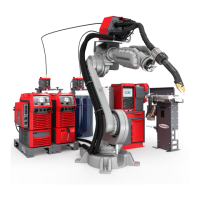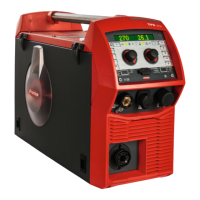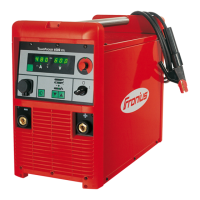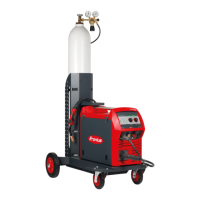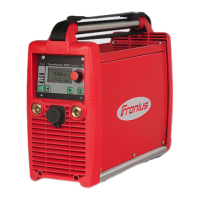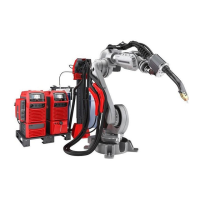A workplace-specific emission value for welding (and cutting) cannot be spe-
cified because this value depends on the welding process and the environmental
conditions. It is influenced by a wide range of parameters, such as the welding
process itself (MIG/MAG, TIG welding), the selected current type (direct cur-
rent, alternating current), the power range, the type of weld metal, the resonance
properties of the workpiece, the workplace environment, and many other factors.
Danger from tox-
ic gases and va-
pors
The fumes produced during welding contain toxic gases and vapors.
Welding fumes contain substances that cause cancer, as stated in monograph
118 from the International Agency for Research on Cancer.
Use at-source extraction source and a room extraction system.
If possible, use a welding torch with an integrated extraction device.
Keep your head out of the welding fumes and gases.
Take the following precautionary measures for fumes and harmful gases:
-
Do not breathe them in.
-
Extract them from the work area using appropriate equipment.
Ensure that there is a sufficient supply of fresh air. Ensure that there is a ventila-
tion flow rate of at least 20 m³ per hour.
Use a welding helmet with air supply if there is insufficient ventilation.
If there is uncertainty as to whether the extraction capacity is sufficient, com-
pare the measured toxic emission values against the permissible limit values.
The following components are factors that determine how toxic the welding
fumes are:
-
The metals used for the workpiece
-
Electrodes
-
Coatings
-
Cleaning agents, degreasers, and the like
-
The welding process used
Consult the corresponding material safety data sheets and manufacturer's in-
structions for the components listed above.
Recommendations for exposure scenarios, risk management measures and
identifying working conditions can be found on the European Welding Associ-
ation website under Health & Safety (https://european-welding.org).
Keep flammable vapors (such as solvent vapors) out of the arc radiation range.
When no welding is taking place, close the valve of the shielding gas cylinder or
the main gas supply.
Danger from Fly-
ing Sparks
Flying sparks can cause fires and explosions.
Never undertake welding near flammable materials.
Flammable materials must be kept at least 11 meters (36 ft. 1.07 in.) from the
arc or protected with a certified cover.
Keep suitable, tested fire extinguishers on hand.
Sparks and pieces of hot metal may also get into surrounding areas through
small cracks and openings. Take appropriate measures to ensure that there is no
risk of injury or fire.
8
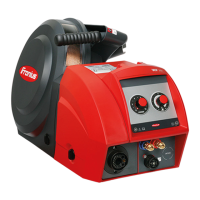
